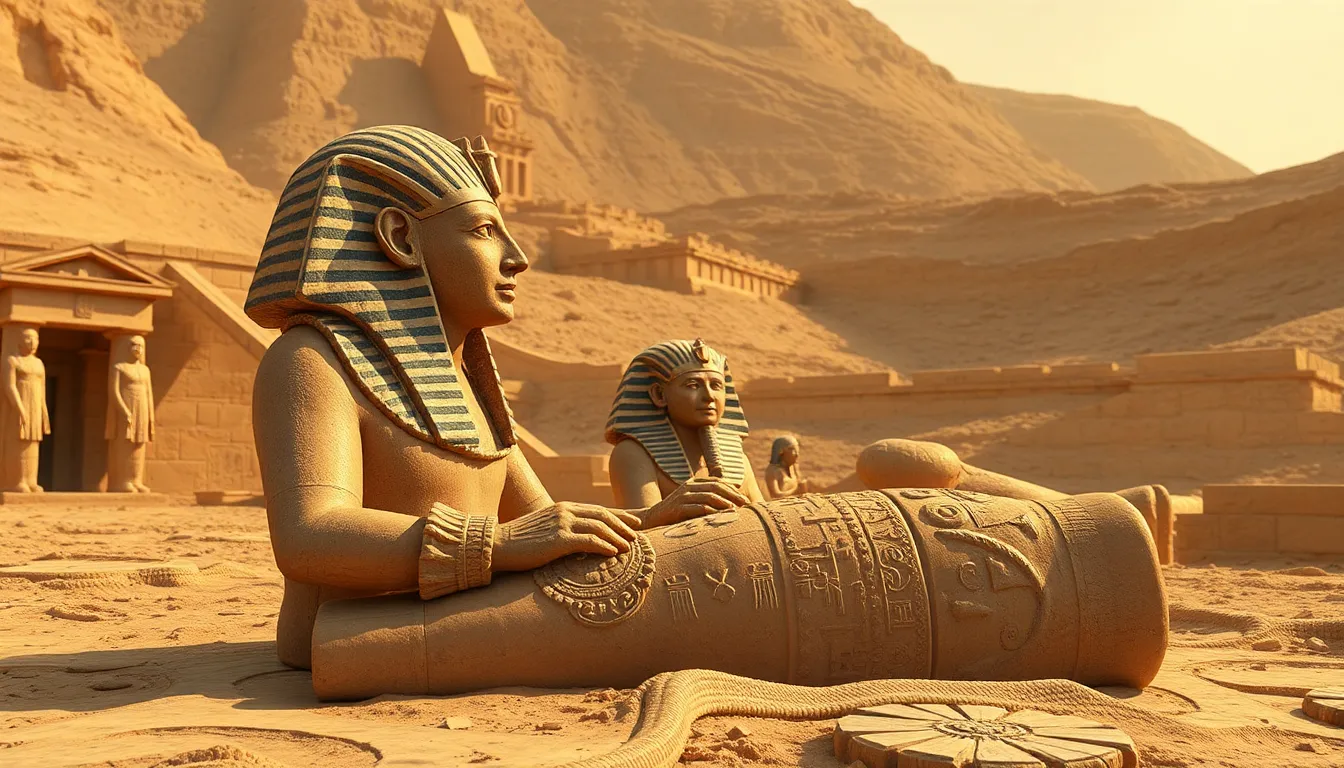The Influence of Royal Burials on Modern Culture
1. Introduction
Royal burials have long been a significant aspect of human history, marking the final resting places of monarchs, leaders, and important figures. These burials are not merely the end of life; they represent a culmination of cultural beliefs, social order, and the profound rituals that societies hold dear. The historical significance of royal burials is multifaceted, encompassing elements of power, divinity, and the afterlife. This article explores the cultural influence of these ancient practices, examining how they resonate in modern society across various domains.
2. Historical Context of Royal Burials
Throughout history, royal burials have varied greatly across different civilizations, reflecting the unique beliefs and customs of each culture. In ancient Egypt, the burial of pharaohs was a grand affair, characterized by elaborate tombs and extensive rituals intended to ensure a safe passage to the afterlife. The pyramids serve as monumental evidence of this practice, with the Great Pyramid of Giza being one of the most famous examples.
In contrast, the Chinese emperors were often buried with vast quantities of treasure and accompanied by terracotta warriors, as seen in the tomb of Qin Shi Huang. Meanwhile, in Europe, royal burials often took place in cathedrals or abbeys, where monarchs were interred with great ceremony, emphasizing their divine right to rule.
- Ancient Egypt: Pharaohs buried in pyramids.
- China: Emperors buried with treasures and terracotta armies.
- Europe: Monarchs interred in cathedrals with ceremonial rites.
3. Symbolism and Rituals in Royal Burials
The rituals associated with royal burials are heavy with symbolism, reflecting the values and beliefs of the society from which they originate. For instance, in ancient Egypt, the use of specific artifacts, the arrangement of the tomb, and the mummification process were all designed to ensure that the deceased would achieve immortality. Similarly, in other cultures, the act of burial itself is rich with meaning, often involving rites that symbolize the transition to another realm.
Common themes in these rituals include:
- The journey to the afterlife.
- The idea of immortality and rebirth.
- The showcasing of power and wealth.
4. Royal Burials in Literature and Art
Royal burials have inspired countless works of literature and art throughout history. These depictions often serve to highlight the grandeur and significance of the figures involved. For example, Shakespeare’s “Hamlet” includes themes of mortality and the afterlife, reflecting the cultural fascination with royal death.
In visual art, the portrayal of royal burials can be seen in numerous paintings and sculptures, which often capture the opulence and the somber nature of these events. Notable works include:
- The “Funeral of the Count of Orgaz” by El Greco.
- John Singer Sargent’s portraits of royal figures.
5. Modern Ceremonies and Their Roots in Royal Traditions
Contemporary state funerals often draw on the traditions established by royal burials. These modern ceremonies can include elements such as processions, elaborate eulogies, and public mourning, reflecting the societal importance of the individual being honored. The state funerals of figures like Princess Diana and Nelson Mandela echo the grandeur of royal burials, emphasizing the collective grief of the nation.
Key comparisons include:
- Processional routes resembling those of historical monarchs.
- Public access to ceremonies, akin to royal mourning practices.
- Use of ceremonial regalia and military honors.
6. Cultural Tourism and Royal Burial Sites
Royal burial sites have become significant cultural heritage sites and tourist attractions. The allure of ancient tombs and burial grounds draws millions of visitors each year, contributing to local economies and promoting cultural education. Notable case studies include:
- The Valley of the Kings in Egypt.
- The tomb of Qin Shi Huang in China.
- Westminster Abbey in England.
These sites not only offer a glimpse into the past but also serve as reminders of the enduring legacy of royal burials in shaping cultural identity.
7. Media Representation of Royal Burials
In the modern age, royal burials are frequently depicted in films, television series, and on social media. These representations often romanticize or dramatize the events surrounding the deaths of notable figures, influencing public perception of royalty and history. Films like “The King’s Speech” and series such as “The Crown” explore the personal and public aspects of royal life and death, emphasizing the rituals of mourning and the societal implications of these events.
Social media platforms also play a role in shaping narratives around royal burials, where images and stories can quickly spread, creating a global dialogue about the significance of these events.
8. Conclusion
The influence of royal burials extends far beyond the confines of history, resonating through modern culture in various forms. From literature and art to contemporary ceremonies and tourism, these ancient practices continue to shape our understanding of mortality, power, and cultural identity. As we reflect on the lasting significance of royal burials, it becomes evident that they are not just relics of the past but vital components of the cultural tapestry that informs contemporary society.




